File this one in the Unexpected Wonderful Internet Things That Started With an Almost Random Click department.
I do like to know when someone comments on my flickr photos. In a previous version of the mobile app, what it showed for notifications matched the settings you make on the web for your flickr activity. You can tell how old and decrepit the interface is, because there’s an option for “notes” which flickr yanked some time ago (cough).
I usually do not care to be notified when someone favorites a photo (more or less the same value as a Facebook “Like”). But sometime in the last year, the notifications on the flickr mobile app do not use your account settings, so when my red circles light up, sometimes I am seeing comments, sometimes favorites.
I’d much rather read a comment than see a favorite. Much more.
After this morning, I might change my estimate of flickr favorites; I saw there was a favorite and a follow by someone named “Taka Umemura”, and typically I would just scroll on by.

This morning’s flickr notifications, nothing special. Well, not yet.
Maybe I was looking for something to do while eating breakfast, but out of curiosity I clicked on Taka’s account. The latest photo in his stream, was some sort of painted version of a photo I took in April in Guadalajara.

flickr photo shared by Loux at Livecraft under a Creative Commons ( BY ) license
Compare to the original, a view taken from the rooftop patio of our hotel of the dome on the church next door:
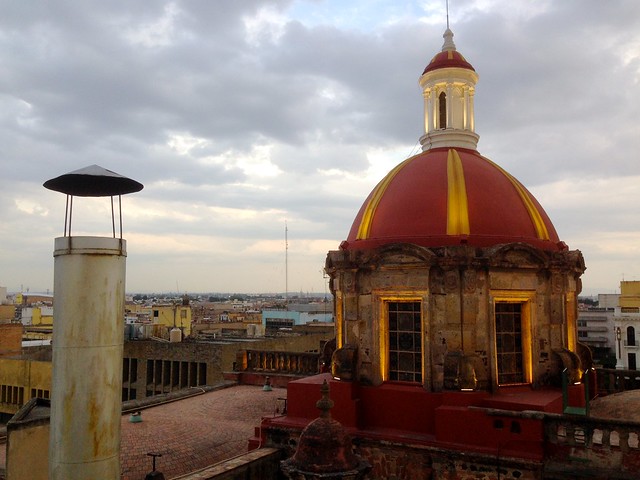
flickr photo shared by cogdogblog under a Creative Commons ( BY ) license
BONUS: See how you can explore both images together with the SPLOT Comparator.
The textures on Taka’s image were not your usual simple flickr or instagram style filters. Heck, on my phone it looked like real texture. So I left a comment on his photo:
Wow, that is stunning. I had noticed you favorited the photo but almost did not click through, I am glad I did. Your images have a lot of rich texture and variety, are these digitally done or ?? tell me more!
to which he promptly responded:
Thank you very much. I’m glad to see your comment. I am providing some app on my web site. Please visit once.
www.livecraft.co.jp/EN/index.html
And you know what sort of hole I fell into…
Taka’s site begins with a bit of a metaphysical tour of his influences from early computer graphics, exploring the idea of our relationship to art:
Here one art model presents itself. This is perceiving a bi-directional cyclic flow of information from the work to you and from you to the work as the locus of the manifestation of the art. Surely the qualia that rise at such times must be the aura the art releases.
Here I’d like to draw particular notice to the flow from you to the art – that is, invoking your power of imagination. In other words, the art in this model is not just the work of the artist who produced the work; it is a collaborative work between the artist and you who are seeing the work. What, then, is the best way to pique the imagination? It isn’t as easy as something just dropping down from above. The hurdle is surprisingly high, but perhaps it is easy for young children or Zen masters who can depict the even whole universe on an empty canvas. If this is so, we should try thinking of the development of art from the view of the art work as a device that both prompts and amplifies the imagination.
We have termed such a mechanism an “imaginary circuit.”
Down the path he introduces his software, Virtual Painter. It’s been around since 1995 as a software that turns photographs images that looks like paintings:
There is no need for you to “paint” the pictures – that’s the job of the “virtual painters” (filters). All you have to do is supply them with the materials and then set them to work.
You will be surprised how easy it is to get VP to create very realistic paintings. But the resulting pictures, based on your materials, are all originals. These unique paintings come about as a result of the interaction between your photographs and the VP filters.
VP is not a painting tool that you must master to create your own works of art. Rather, the filters it offers are like agents, virtual artists who have their own characteristic techniques and methods. You can preview their art and even request a few changes, but you can leave the hard work to them. Sit back and watch them paint.
The filters are known as “painters” with names — Rabica (watercolor), Purts (oils), Quapeo (gouache), and Targelin (triangles), Plince (colored pencils), and Saplet (pastels). Originally a Windows application, it became built into Corel as a filter and for a while was associated with Casio, but now is the property of the artist, adding new painters such as Farica:
Virtual Painter is also available as a free app for iOS (you get 5 painters for free, the rest of $2.99 each in app purchase).
I downloaded it right away. Bonus points for the dog icon:
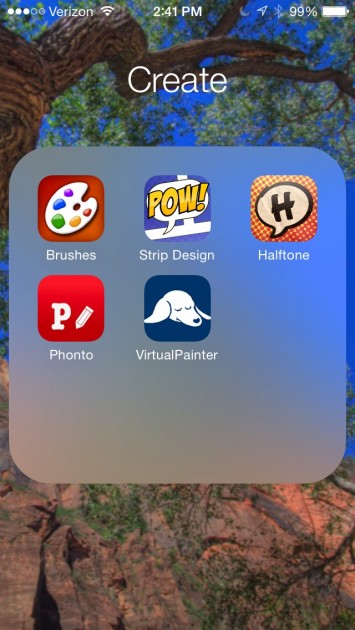
Virtual Painter for iOS
Here’s one I made just using the camera, looking at my messy table with morning light coming in the window

And another I did with a copy of a photo of my trusty Dominoe that was on my phone.

Creating with Virtual Painter
Beyond the choice of filter effects, there are about 6 settings you can fiddle with to “tune” Foundation (texture), Focus (sharp or blurred), Deform (not quite sure), Color (saturation?), Touch (??), and Resolution (choose the size of the final image).
I did another test with this image I had made in Photoshop combining my Mom at 81 with a superimposed photo of her at 17, I asked her to recreate her pose:
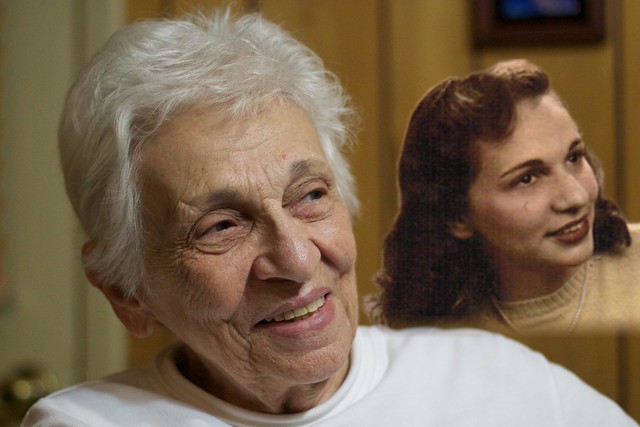
flickr photo shared by cogdogblog under a Creative Commons ( BY ) license
I used the the “Purts” painter (oil painting effect) and fiddled with a few tunings. Each change takes a few seconds to render, so you can tell it’s doing some good processing under the hood.
You can watch it render in from very pixelated to fine detail.
Virtual Painter processing
This image took about 2 minutes to finish. I could see on the phone that it had made it look less like a photograph, but it was not til I looked at the full size one that I could see how rich the detail was in the new image.
I am going to have a lot of fun with Virtual Painter.
What I have not played with is MirageOnFlickr, the software Taka used to create the image he shared on flickr, because it runs only on Windows. It is desktop software that applies the Virtual Painter tools pulls to images pulled directly from flickr that are licensed Creative Commons:
This is a virtual painter program that uses photos published on the photo sharing website Flickr as its source material for creating images. The source photos are extracted from amongst those published under the Creative Commons free culture (CC BY, CC BY-SA) license. If you come across an image you like, it can be saved in your photostream as quickly as the click of a shutter on a camera.
It is becoming more and more difficult to find original ideas amongst the deluge of information we find ourselves buried in with the current digital age. Please try to imagine how many things must be out there that you have not yet had the good fortune to stumble across. Finding new things first means having some sort of opportunity to do so. This is so even if that means by chance or through some type of misunderstanding.
A nice detail is that the final image renders with a Creative Commons license image baked in.
I’d be curious if someone who has a Windows machine can give it a go (it’s a free download).
Just a taste of what Mirage does
This is amazing stuff (to me). And I would bot have found it if I had not clicked a link I typically would not have clicked on.
Rabbit holes are just the entrance to the world of digital content and art shared freely on the net. It is much more complex and beautiful the further down you go, and the more often you take unusual turns.
I’m going back down there….
Top / Featured image credit: flickr photo by Loux at Livecraft http://flickr.com/photos/virtualpainter/17742145834 shared under a Creative Commons (BY) license remixed from my own creative commons licensed flickr photo

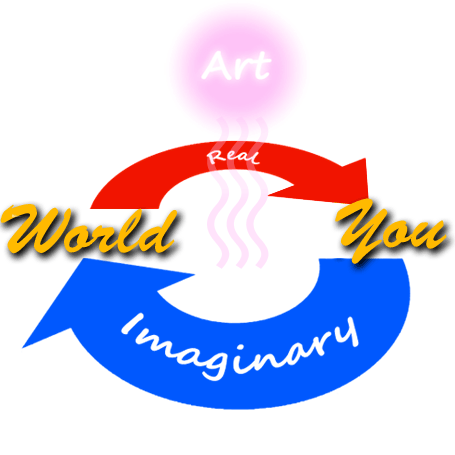


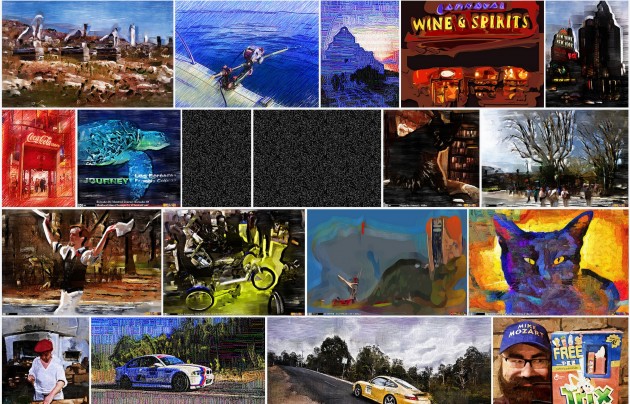


What fun!
I can see it helping in seeing photos as paintings to paint.
Doesn’t your sister Harriet paint (real paint) from your photos – I know I read it and was wowed by her work. For me this app would help in seeing textures and styles to recreate in paint.
Seems a little quicker and to the point than using filters in photoshop.
I may have to power up the windows machine now as well to try Mirage
You call them rabbit holes – I call it chasing bright and shiny objects—-I see some sparkles out there. 🙂
Great day of creation!
Wonderful story! I like the seredipity involved, as well as the intriguing thoughts by your Japanese app developer on the nature of art and the imagination. Will dowload VP immediately!
Kewl! I downloaded it too. I think it will help give me an idea of how a photo might translate to a painting.
Exactly Harriet! I agree and want to use for that purpose!
🙂
This is the kind of thing that makes the web what it can be (and makes me happy). What a cool story and a serendipitous and trippy (serentrippitous?) find, the kind that can only happen through making and sharing.
You know it, I know it. We are the 0.1% and that’s ok